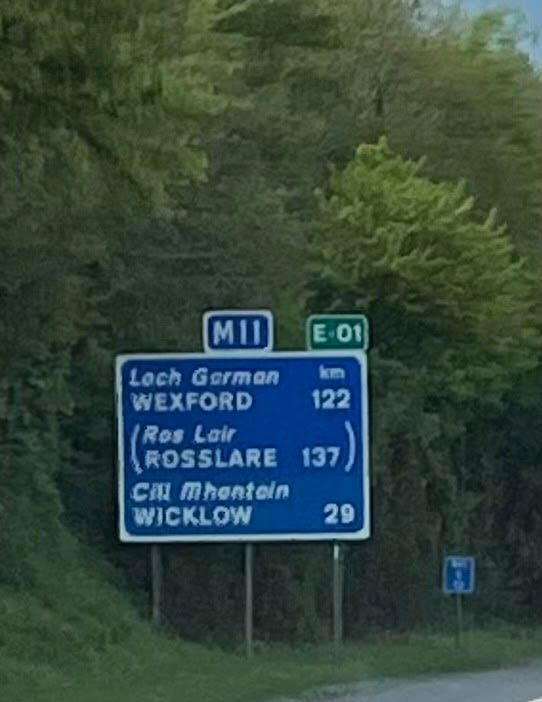At one time cruise ships docked in the city of Dublin, but no more. A couple of years ago, the port authorities there decided that they would not allow cruise ships into the port, so instead, all cruises have to anchor at Dun Laoghaire, which is a suburb south of the city proper, and use tender service to ferry their passengers and crew ashore. That’s what we did today, after a cloudy arrival but in temperatures that were already warmer than the last week.
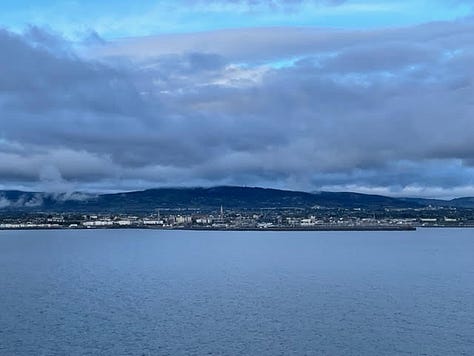
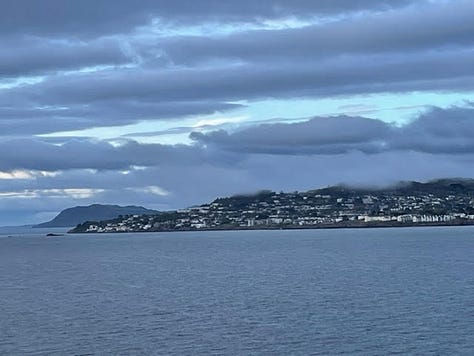
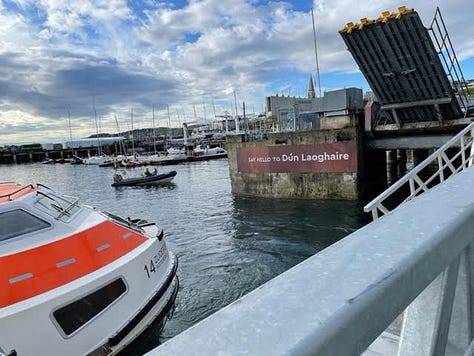
My day consisted of a private tour with two friends. Because it’s a Sunday and many things are closed in the city, we chose to take a pretty basic drive-through to see some highlights before heading out of the city to County Wicklow. It was a long day, so this post will cover only the trip to Dublin. I’ll post about Wicklow later.
First, the name. Dun Laoghaire is pronounced “Dun-Leery,” and they know most tourists won’t know that before they arrive.
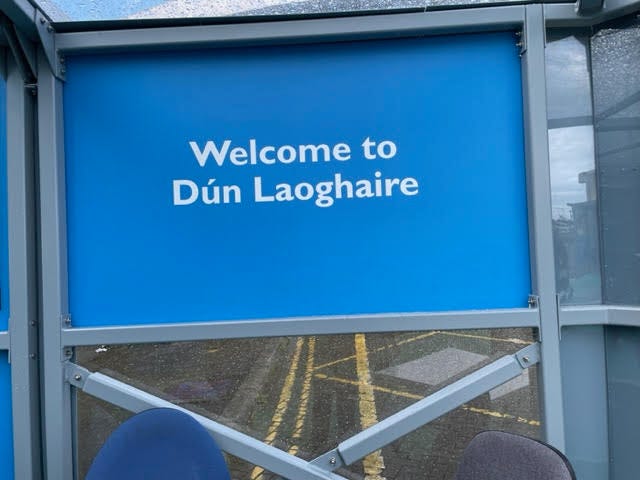

We set out with Sean, our guide, for the 45-minute drive to Dublin. We passed some attractive houses and a lovely park.
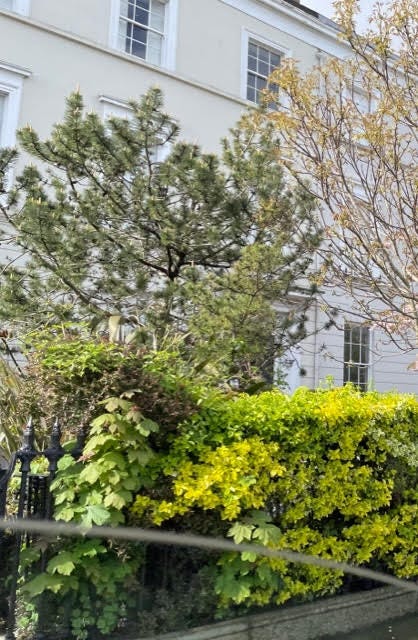
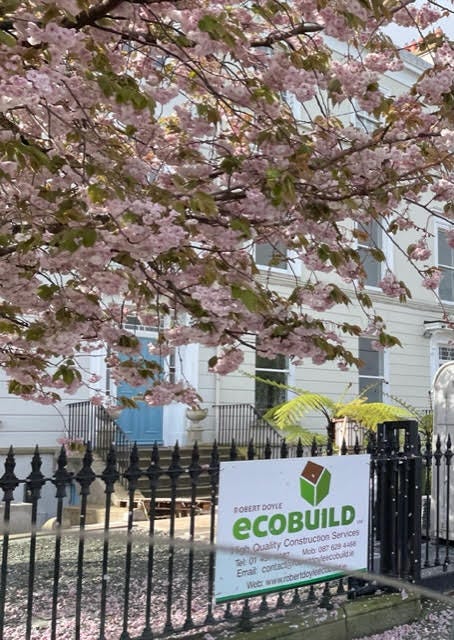

We approached Dublin from the south, an affluent part of the city, passing the American Embassy behind a high fence. Soon we passed over the south canal, marking the boundary of the city itself.
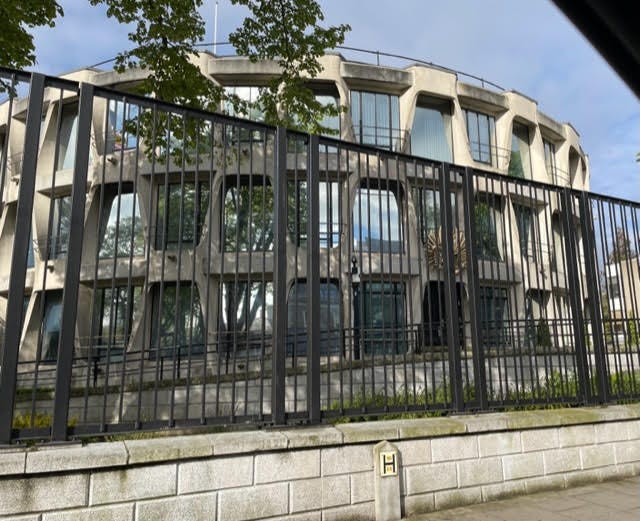
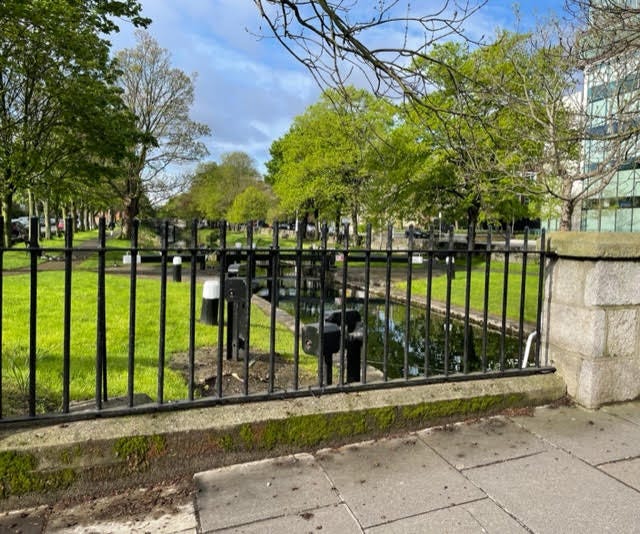
I was surprised to learn that Dublin’s population is 1.5 million. Coming from Chicago, I expect major world cities to be bigger than that. Soon we drove past a park honoring Dublin native Oscar Wilde, portrayed in the statue sitting on a boulder. The park is across from the home in which Wilde was born.
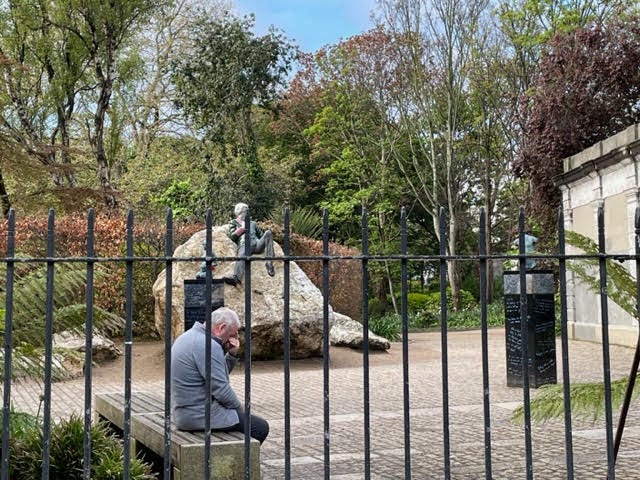

There are many streets of Georgian homes, so striking in their repetitive features. Reminds me of some of our suburban subdivisions where all the homes look alike, but these are much more elegant.
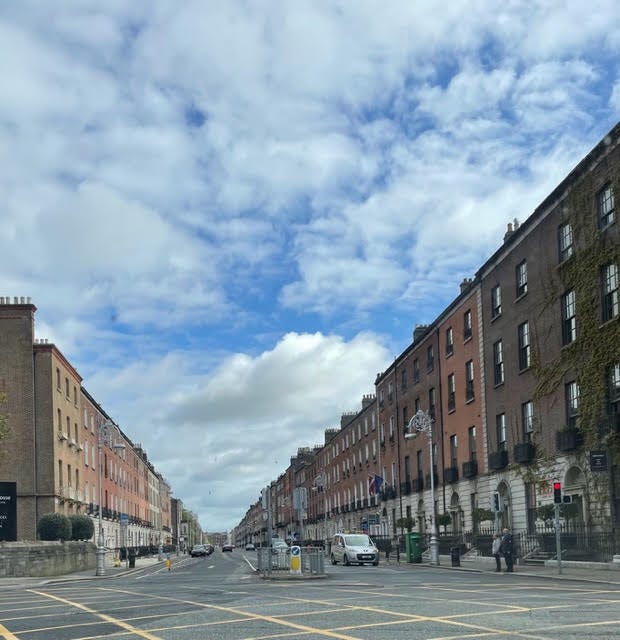

We drove past Trinity College, a famous university totally incorporated into the city. Even though it’s Sunday, the streets were bustling. I loved driving through the central city streets. The street lights are gorgeous and the buses are colorful.

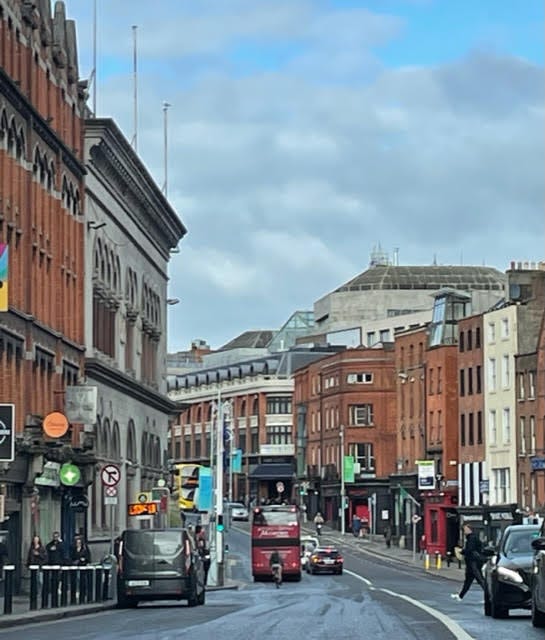
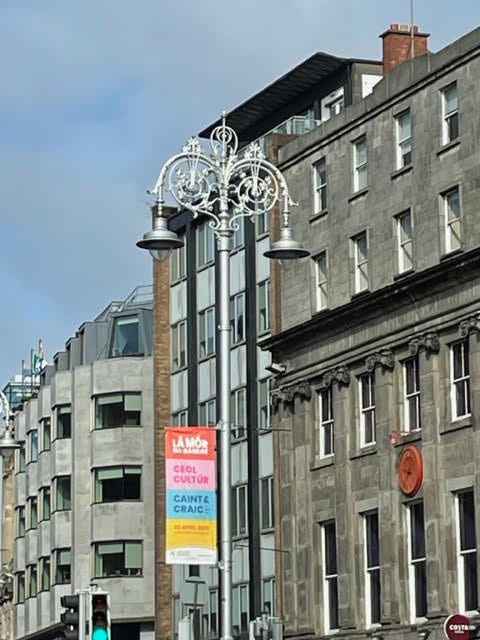
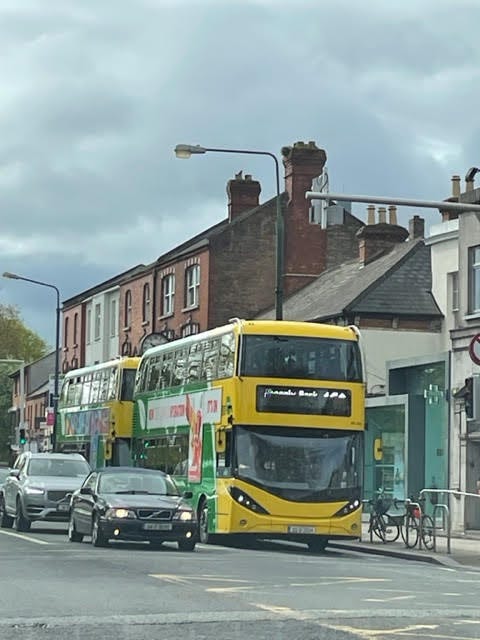
We passed Christ Church Cathedral before reaching the remains of the original city walls. Behind the walls you can see St. Audoen’s Church, built by the Normans in the 12th century. Throughout Dublin, you see a mixture of architectural styles side-by-side.
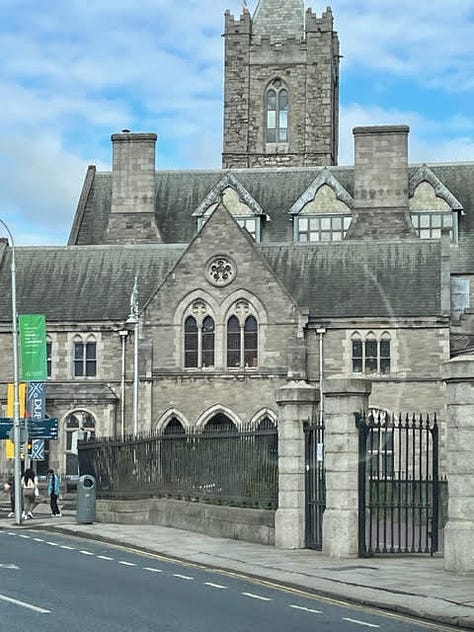
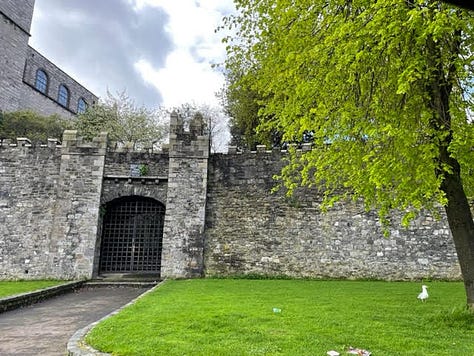
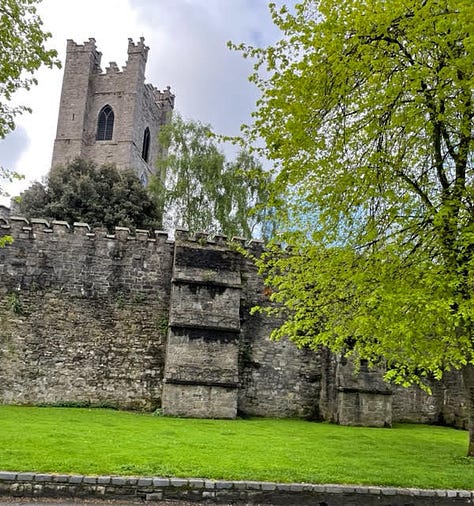
Near there we entered the Guinness area, where much of the real estate is owned by the brewery company. Most Guinness is now brewed in Africa, but they retain a brewing presence in Dublin. The Guinness Storehouse is a big tourist draw. Decades ago, the company built housing for their employees and some for impoverished people.

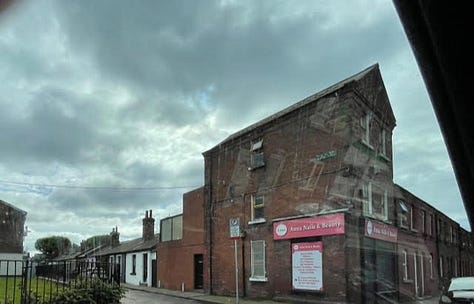
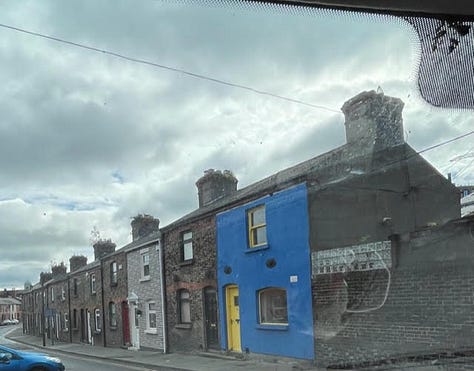
St. Patrick’s Cathedral is another landmark church. As we were leaving the city proper to literally head for the hills, we drove down a street lined with budding trees. We’ve seen daffodils, tulips, and flowering trees everywhere the last several days, so even though the weather wasn’t spring-like, we know that spring is here.

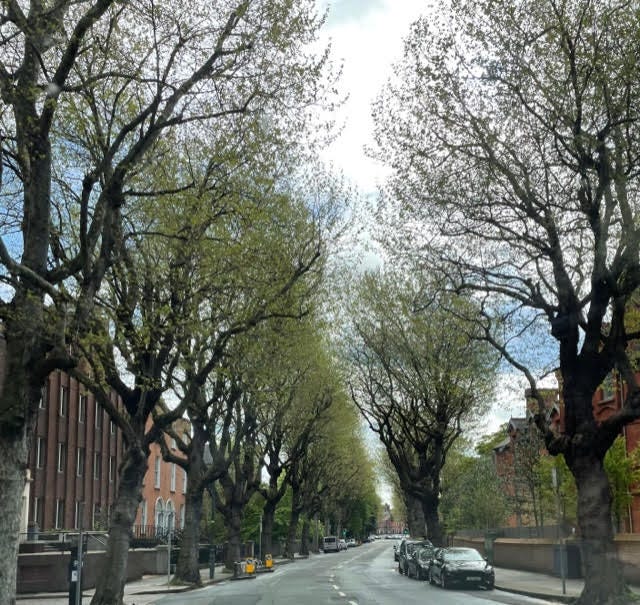
A final note for tonight: All children learn both Gaelic and English in school, though many do not become or remain fluent in Gaelic. By law, all traffic signs (and many commercial and other signs) are in both languages.



